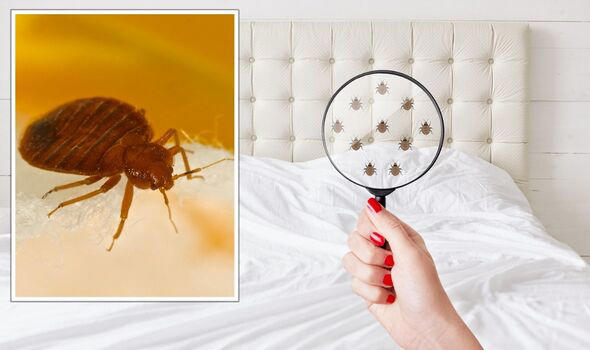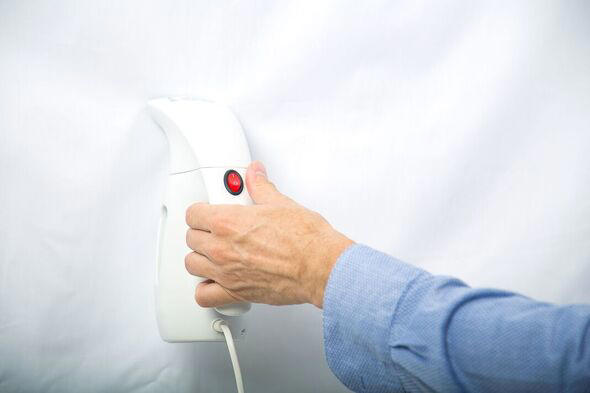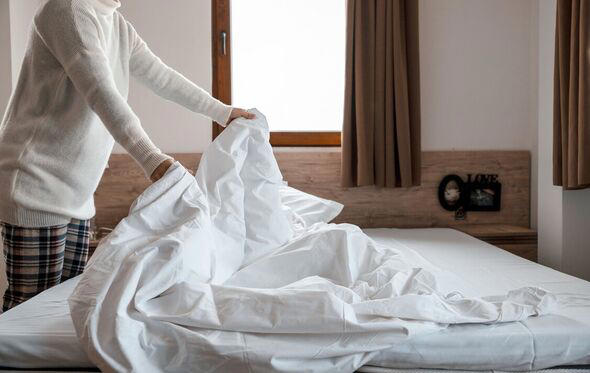3 ‘natural home remedies' to ‘effectively' get rid of bed bugs - ‘prevents bugs entering'
Bed bugs are small, flat, invasive insects that rely on the blood of sleeping people and animals as their only food source. These unattractive pests are red-brown in colour and are about 1mm-7mm in length. While they rely on blood to keep them alive, they can go several months between meals. Since a healthy female bed bug can lay up to 500 eggs in her lifetime, you can wind up with a serious infestation in a matter of just weeks.
Since bed bugs multiply quickly, it's essential to find them before they start to reproduce.
Once you've identified an active bed bug infestation, you have to contain it so it doesn't spread.
One quick and easy way to contain live bed bugs is by sucking them up with your vacuum.
To eliminate these pests, Zach Smith of Smith's Pest Management has shared "three natural home remedies" households can use to eliminate bed bugs.
Three natural home remedies:
1. Get rid of bed bugs naturally with heat or cold
According to the pro, temperature is an "effective way" to get rid of bed bugs in a mattress or other important area.
With that in mind, gather affected bedding or clothing and wash it in very hot water for 30 minutes.
Alternately, Zach suggested putting the affected items in a freezer that is "at least 0 degrees Fahrenheit". Leave them there for four days to make sure all bed bugs are dead.
2. Use steam
To kill bed bugs without an exterminator, the pro said: "Use a steamer on mattresses, couches, and other places where bed bugs hide."
Steam forms from water at 100 degrees, so it's already way over the killing point required to exterminate bed bugs immediately. Steam will kill pretty much any insect at that temperature.
In most cases, steam directly applied slowly and evenly to pretty much any surface (that can safely have steam applied to it) will be effective at helping you kill bed bugs.
If you have clothing that you can use a steamer wand on, slowly drag it across like you normally would.
If you have certain pieces of furniture that can handle the moisture and temperature, slowly go over the flat planes and focus on crevices and areas where there are bolts and
screws, because that's where bed bugs would hide.
3. Cover mattresses
Households can purchase a bed bug-proof cover to place around the mattress and the base of the bed.
Zach said: "When zipped all the way up, these covers will prevent bed bugs from entering, and will kill bed bugs trapped inside.
"They also form a protective barrier that prevents the bed bugs from biting you while you sleep."
Two conventional bed bug treatments:
1. User an insecticide
If home remedies don't appeal to you to get rid of bed bugs, you can turn to insecticides. Pyrethrins and pyrethroids are two common insecticides used to kill bed bugs.
Bed cover© Getty
According to the expert, as far as pesticides go, these have a relatively "low toxicity" to pets and people, and are "fast-acting". They also require a low dose to kill insects.
The drawback, however, is that some bed bugs are resistant to these chemicals. In that case, you may need to use an alternate insecticide, such as pyrroles like chlorfenapyr, or neonicotinoids, which are synthetic versions of nicotine.
2. Use a desiccant
Desiccants are substances that kill bugs by destroying their protective coating. Without this coating, the bugs dry out and die, according to Zach.
He noted: "Two popular desiccants are silica aerogel and diatomaceous earth. Bed bugs cannot become resistant to desiccants, and these substances have a high kill rate."



